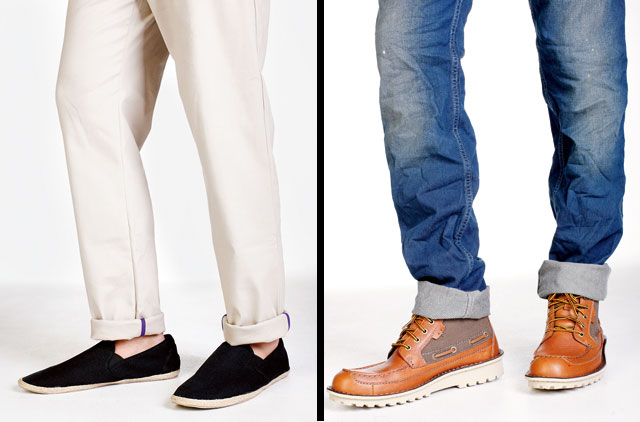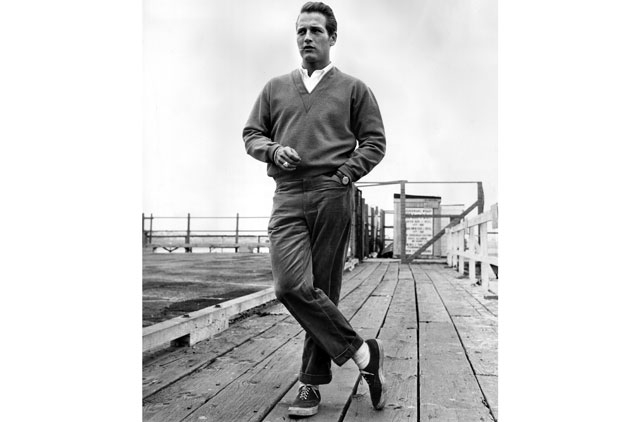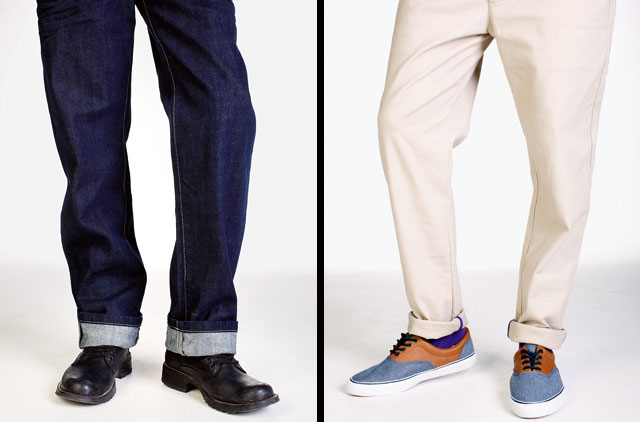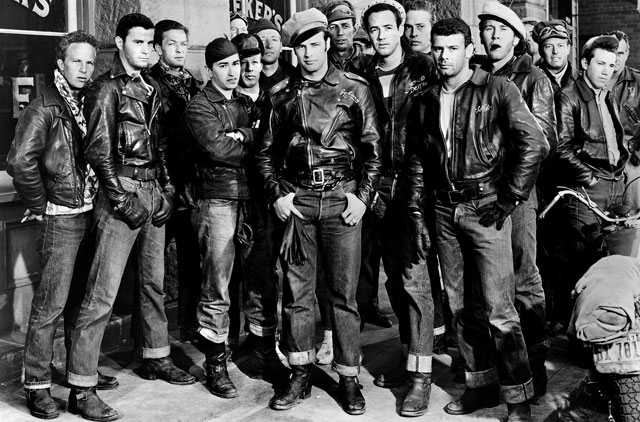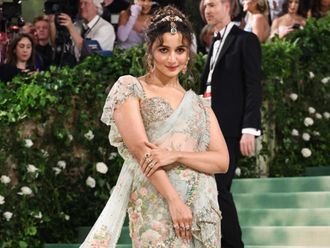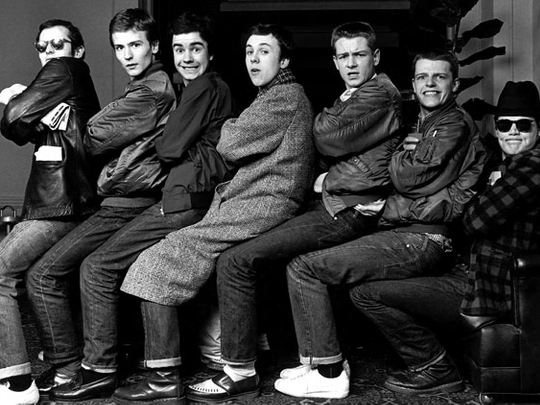
The current ubiquity of the turn-up was brought to my attention after attending a recent men's fashion show. Looking around, I noticed that all the men - supposedly big cheeses in menswear - looked exactly the same: greased-back hair, bushy Icelandic beards, single-breasted blazers and check shirts buttoned to the top.
Worst of all, though, were the horribly narrow faux-selvedge jeans with huge turn-ups, bright socks (mainly red) and large brownish-orange brogues.
From what I can gather this is the new uniform of the male fashion cognoscenti who by slavishly adhering to this or any pre-prescribed look, are negating their positions as arbiters of taste.
Surely such men are supposed to dictate fashion and not follow it. One thing is for certain: they should not all look exactly the same with identical, oversized and entirely unnecessary turn-ups - or ‘cuffs' as the Americans confusingly call them.
So what is the purpose of turn-ups and who invented this trend that has been prevalent in menswear for the best part of a century?
Looking at online forums I chanced on one American who said that he'd read that, "pants cuffs [turn-ups] were first invented to be used as a portable ashtray for men and their cigars."
He went onto write: "I was 100 per cent positive that I read this… Can anyone find something on this and back me up? My co-workers think I make stuff up."
I laughed out loud, until further down the page a lady going by the name of ‘Kalhoun' remarked: "Actually, my husband uses his cuffs as an ashtray…. he doesn't like to toss the butts around, so he tucks them into his cuffs." I pity his dry-cleaner.
Reading on, another person commented thus: "Cattlemen in the old West would often turn their pants cuffs up to hold small items, like nails or staples. That would keep the supplies close at hand while riding the range."
Of course, even though of late I've seen turn-ups on Japanese fashion victims big enough to hold a Colt 45, none of the above is entirely accurate. In truth, the trend for turn-ups came from two diametrically opposed but equally pragmatic sources, at roughly the same time in history and for exactly the same reason.
In the mid-19th century, mining and cattle industries boomed in the US alongside companies such as Levi Strauss, who made the workers' trousers - aka jeans. Previously most clothes were custom-made to fit, but these shop-bought items were all off the peg. So cowboys, miners and the like turned their jeans up to avoid getting the bottoms in the mud, or worse, tripping over them. Cutting them would cause them to fray, and appearance was not an issue. The look became the norm and, right up until the Seventies, that is how jeans were worn.
These days, only a child or young teenager can get away with narrow jeans with huge turn-ups as he is still growing and, as his mum might say: ‘You'll need that extra few inches of hem a few years down the road."
If you are over 20 and you feel you must sport a large turn-up (seven-and-a-half centimetres maximum) then the jeans have to be a good 40 centimetres wide at the bottom and must have proper selvedge (such as the Lee Archive or Levi replica 501), while the overall look has to be vintage. As for footwear, it's got to be a good work boot such as the Redwing Engineer (as worn by Brando in The Wild One) or the moccasin-topped Featherstone.
That said, on a selvedge pair of jeans I prefer the half-centimetre tiny turn-up. This looks great with wingtips (Florsheim or Loakes, for example), loafers (try JM Weston) or Cherry Red Doc Martens boots. It'll never seem as if you're trying too hard.
As for the second source that led to the turn-up on formal suit trousers, it has been said that the trend was initiated by Edward VII Prince of Wales, who in the late 1890s turned his trousers up whilst at race meets to avoid getting mud on the bottoms. English aristocrats - suckers for any fad started by a royal - followed suit and, much to the future king's bewilderment, copied his pragmatic affectation. Similarly, legend has it that the cuff fashion began in the US in 1905 after an English nobleman, on his way to a wedding in the rain in New York, turned his trousers up to avoid getting them wet and forgot to let them down. Fashion-conscious New Yorkers thought this a remarkable new craze and the fashion for cuffs began.
In fact, you could say that the style was initiated by those who couldn't give a damn (princes and poor workers) and popularised by this who could (wannabe toffs and fashion victims).
The fad was taken a step further in the 1920s. When an enterprising Savile Row tailor conceived the trouser pleat, the future Duke of Windsor subsequently adopted them and wore them with turn-ups, purely because they make pleated trousers hang better. Subsequently, students at Oxford began wearing baggy trousers - aka Oxford bags - with turn-ups over their fashionable plus fours, which were banned in class. The trend caught on in the US after visiting Ivy League students spotted the look and loved it.
Most trousers had turn-ups until the Second World War, when the governments of both the US and the UK made them (and pleats) illegal as they used up valuable material in times of fabric rationing. During this period, the turn-up was a sign of rebellion, wearers wanting to cock a snook at the authorities.
Similarly, after the war the UK's privileged went straight back to the pleats and turn-ups simply because they could, while the working classes still suffered from austerity measures and couldn't afford it.
Across the Atlantic, hand in glove with Dior's New Look of 1947 for girls, came the Bold Look. This saw men wearing big suits with big shoulders and full, pleated peg trousers with turn-ups. It was a look that crowed about US post-war affluence and the golden age of consumerism.
Today, as the Mad Men-style, slimline cuffless suit becomes commonplace (and, in my opinion, a little dull), many a stylemonger has moved back to the Fifties Bold Look for which the turn-up is a prerequisite. But still, turn-ups should be proportionate to the length of the leg sporting them. Shorter men look better with a three-centimetre turn-up while huge turn-ups will make a small man look like a child (but at least he'll get a lollipop at the dentist). A man of average height should not go more than four-and-a-half centimetres on the turn-up, while tall men can go a full five centimetres.
All turn-ups should hit the top of the shoe causing a small fold (also known as a break) while your socks should never be seen while you're standing up.
In general the rule is, if your trousers are pleated wear a turn-up and if not, don't. That said, the chino, a pair of trousers that should never be pleated, can live with either. Think Gene Kelly in An American in Paris or either Steve McQueen or Paul Newman circa 1963 and you can't go far wrong.


